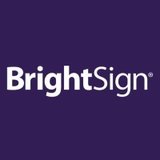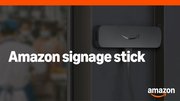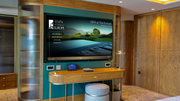Article
System on a chip versus media players: Which is the right choice?
When it comes to digital signage hardware, end users have two major options: media players and displays with an integrated system-on-a-chip.

November 16, 2018 by Bradley Cooper — Editor, ATM Marketplace & Food Truck Operator
When it comes to digital signage hardware, end users have two major options: media players and displays with an integrated System-on-a-Chip. Samsung first launched SoC displays in 2012, and has argued ever since that the displays offer a major advantage to media players. Other companies, however, contend that SoC isn't all it's cracked up to be and media players are still the best bet.
The case for SoC
System-on-chip integrates all key computer components into one little compact board. "This means that the kind of computing horsepower and gear that used to be contained in boxy personal computers is now small enough to be built right inside devices," Dave Haynes explained in an article on Samsung Insights.
He argues in turn that SoC can remove the need for media players and thereby reduce costs in a number of ways such as:
- Cutting hardware costs by only purchasing a display.
- Cutting down installation time.
- Cutting field serving costs.
SoC can also potentially reduce power costs, by removing the need to power an external media player, according to a past blog on Digital Signage Today.
The case for media players
But media player advocates point out that media players are specifically fine-tuned for advanced digital signage features that end users can't get from SoC.
"Media players provide a much greater and more advanced set of features, including interactive options and frame-accurate synchronization, that you can't get with SoC displays," Jeff Hastings, CEO of BrightSign, said in an interview with Digital Signage Today. "Media players also provide choice to the end-user — choice of capabilities."
Drew Harding, head of sales and marketing at Eclipse Digital Media, also argues in his blog on Digital Signage Today that a SoC display isn't as flexible as a media player.
"SoC can be used as an all-in-one display to show multizone content, and some can also be used for touch applications … however, could it easily be used for a touch payment application with advertising elements along with audience measurement?" Harding wrote. "Not really, but the media player can be. What about delivering 4K content to a video wall with a range of display sizes mounted in various angles? Again, not really."
Even Haynes admits there are still occasions when a more powerful PC-driven media player would make more sense, such as for a UHD videowall.
Hastings also notes that big box retailers, looking to deliver better customer experiences, are not investing in SoC displays.
Conclusion
The overall arguments for each side boils down to a few key observations. The SoC side argues the device is cheaper and more convenient. The media player side argues their device is better suited to digital signage and can handle more intensive deployments.
With companies continuing to deliver new media players and SoC displays, one thing is clear: neither device is going anywhere anytime soon, so customers will have to continue to make a choice.
Image via Istock.com.
About Bradley Cooper
Included In This Story
BrightSign
BrightSign is the global market leader in digital signage media players, offering the most reliable, secure and sophisticated solid-state media players on the market today.








